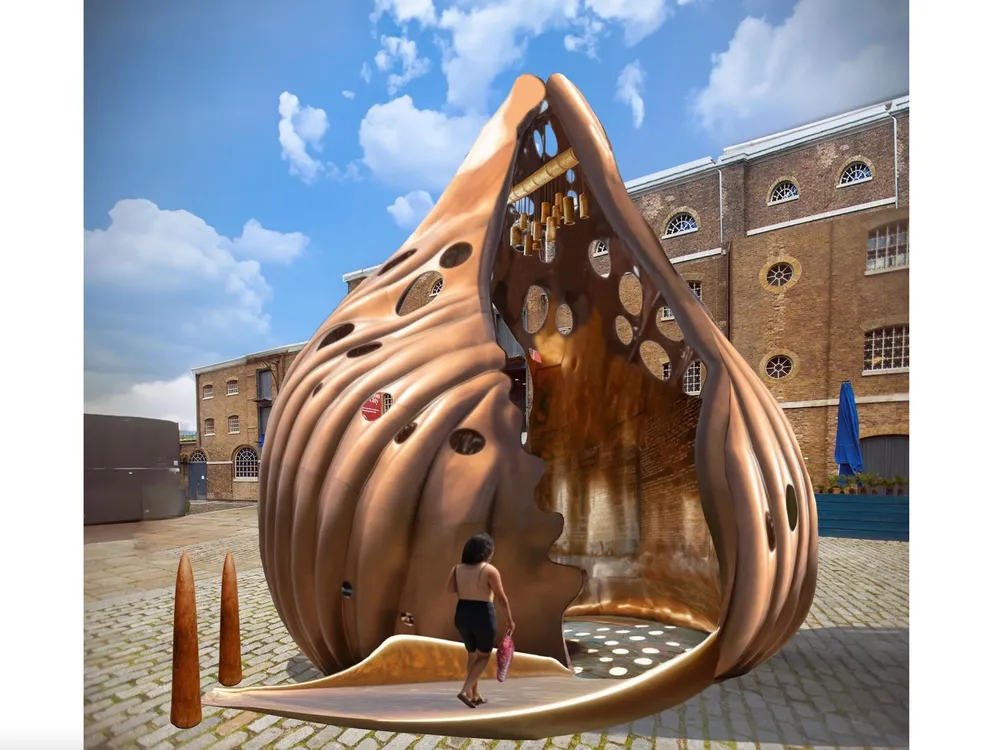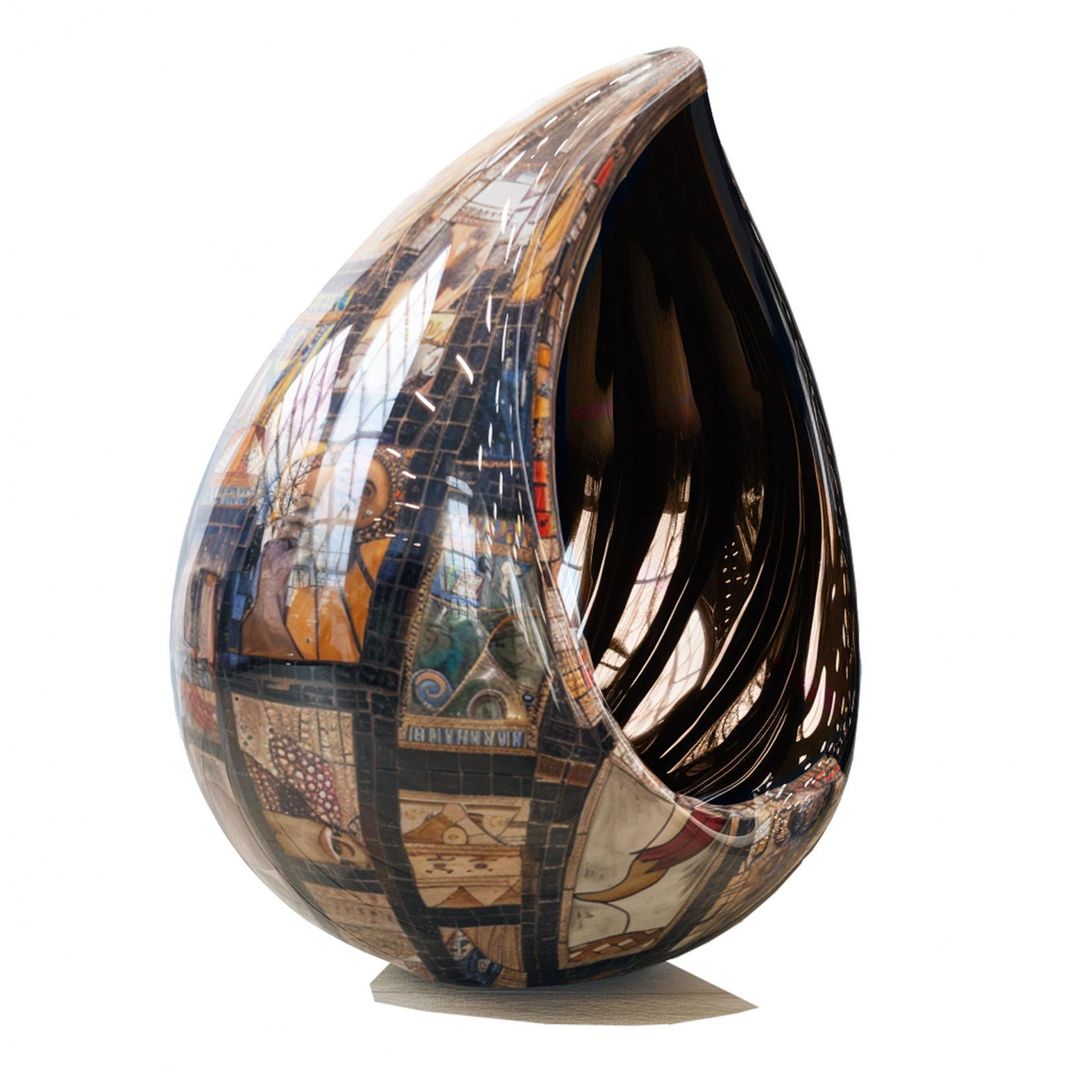London Unveils Design for the City’s First Memorial to Victims of the Trans-Atlantic Slave Trade
The towering bronze sculpture by Khaleb Brooks will be installed at West India Quay in 2026

The long-awaited design of London’s first monument to victims of the trans-Atlantic slave trade has been unveiled. By 2026, the city will feature a towering bronze cowrie shell, which will symbolize the plight of enslaved Africans.
Titled The Wake, the 23-foot-tall sculpture was designed by Chicago-born artist Khaleb Brooks, whose ancestors were enslaved in Mississippi. His idea was chosen from a shortlist of six proposed memorials to the individuals trafficked across the Atlantic in a trading system that London “played a key role in,” according to a statement from the mayor’s office.
Between 1640 and 1807, British ships carried about 3.4 million Africans across the Atlantic, and port cities like London played a central role in the industry’s expansion. The monument will be located at West India Quay, where vast quantities of goods manufactured by enslaved individuals, like sugar, once entered the United Kingdom.

“When we talk about the trans-Atlantic slave trade, we’re speaking to people’s history and not just Black people’s histories,” Brooks tells the Guardian’s Lanre Bakare. “It’s everyone’s history on this land, no matter what our involvement was. … We’re still very much impacted by the history of the trade. So I hope The Wake exists and serves as an acknowledgment that there’s still a lot of work to do.”
Visitors to The Wake will be able to “enter and pause within,” writes Brooks in a description of the memorial. The bronze installation will have two entry points decorated with sculptures of sugar loaves, representing the enslaved labor behind the sugar industry.
The Wake’s internal walls will be inscribed with names of enslaved people, as well as blank spaces for the many who remain unidentified.
The sculpture’s swirling, conical shape is inspired by the cowrie shell. The small, durable shells were used as currency in Africa as early as the 14th century. Brooks settled on the cowrie shell after learning that the tokens were used to purchase people as well as goods, per the Guardian. The abolitionist Olaudah Equiano, for example, once said that he was sold for 172 cowrie shells in the 18th century.

When it’s completed in 2026, The Wake will stand not far from the former location of a statue of Robert Milligan, an 18th-century merchant and enslaver. Following racial justice protests, city officials removed the statue in 2020. Last spring, Mayor Sadiq Khan announced that he’d allocated £500,000 (roughly $656,000) in funding for a monument to victims of the industry Milligan profited from.
“There are numerous buildings and monuments across London which represent the riches made from the trade in enslaved people, but not enough to commemorate the tragic loss of life and the perseverance and strength of character of those enslaved and the African diaspora,” says Debbie Weekes-Bernard, London's deputy mayor for communities and social justice, in the statement.
Weekes-Bernard announced the winning design on August 23. In her remarks, she said she hoped the monument would be a “step” toward a larger conversation about Britain’s past, per Reuters’ Catarina Demony. The sculpture will be accompanied by educational programming, which will encourage Londoners to reflect on their city’s history.
“We are our history: It tells us where we’ve been, where we are and the direction we could go,” says Brooks. “Through honoring, grieving, healing and learning about those who faced the horror of slavery before us, we make a conscious effort to engage the liberatory ethics that sought an end to the trade.”

